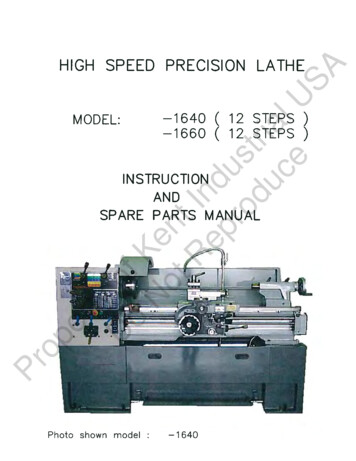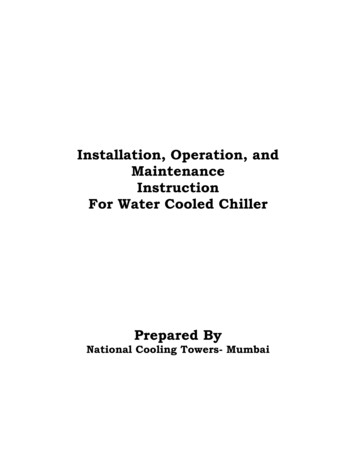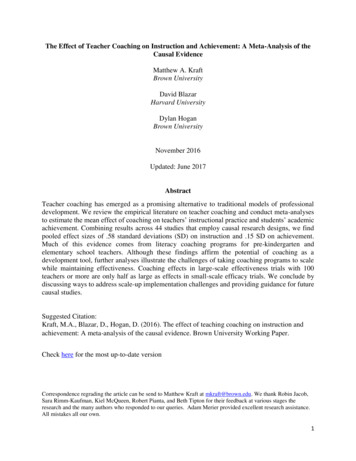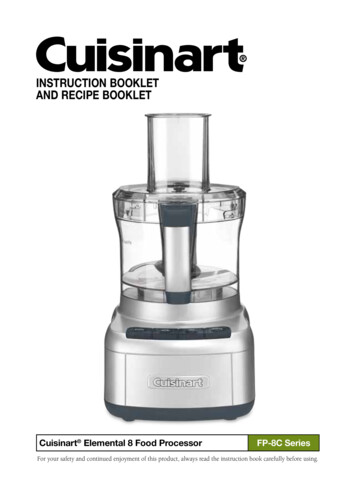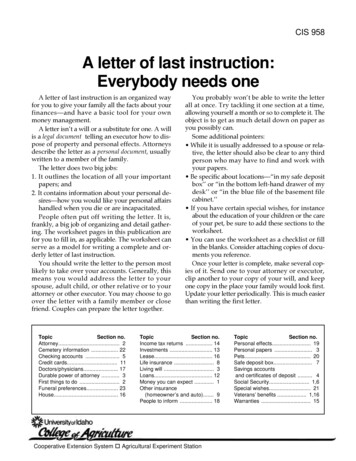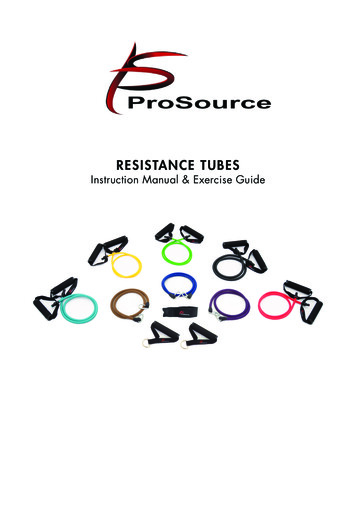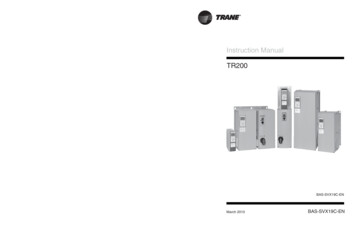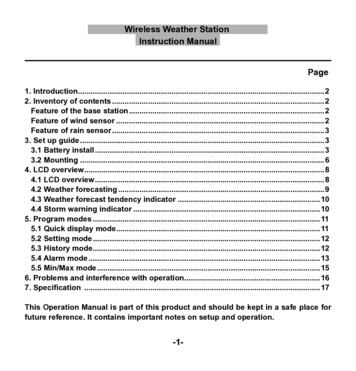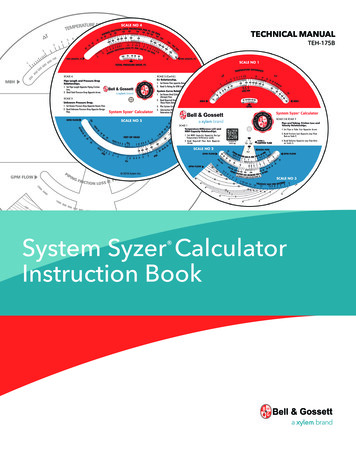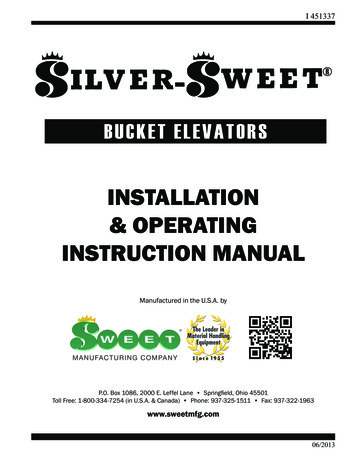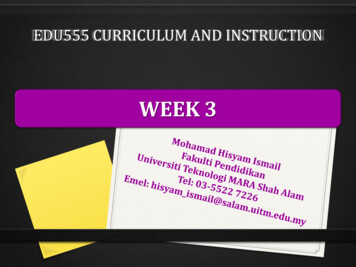
Transcription
EDU555 CURRICULUM AND INSTRUCTIONWEEK 3
Interaction ModelOBJECTIVESEVALUATIONCONTENTSMETHODS
Interaction / Dynamic Model0 To overcome the weaknesses of the Tyler’s Model, Taba(1962) and Cohen proposed a more dynamic process ofcurriculum development0 It is a modification of the Tyler’s Model0 In this model, curriculum development is seen as a dynamicprocess0 It may begin with any of the four curriculum element i.e.objectives, contents, methods, evaluation and theseelements can be followed in any sequence
Interaction Model0 Curriculum development may begin with any of thecurriculum element i.e. need not follow the orderor sequence as in Tyler’s Model.0 The four elements are regarded as interactive andmodifiable i.e. changes can be made at any time.0 A change made to one element will similarly causechanges to the other elements.0 As such, the curriculum development processbecomes flexible and dynamic.
Interaction ModelStrengths:0 PracticalRepresent a true picture of curriculumdevelopment0 FlexibleAllows the curriculum developer to:0 Change the order of planning, and thus, not restricted bya fixed procedure.0 React to learning situations in determining the sequenceto follow according to the curriculum element.
Interaction ModelWeaknesses:0 No fixed objectives:By not stating objectives first, the objectives may beaccommodated to suit the contents.As a result, the objectives are not in line with the initialobjectives.0 No fixed directionContinuous changing of direction during the process ofcurriculum development will result in a disorganisedcurriculum.
Interaction Model0 The Interaction Model is practical and flexible and canbe appropriately used to design the curriculum.
Taba’s Model
TABA’S MODELTaba’sModel(Hilda Taba,1962)Mostsuitablemodel forlanguageprogramBased on theObjective Model orTyler’s Model (RalphTyler, 1950)Prominent model forcurriculumdevelopment andwidely used as areference
Taba’s Model0 Also known as “Grass-roots approach’.0 Based on the rationale that those who teach the curriculumi.e. the teacher, should participate in developing thecurriculum.0 Teacher should have major input in curriculumdevelopment.0 Agreed with Tyler that there should be a definiteorder in developing the curriculum to facilitateattaining a more thoughtful and dynamicallyconceived curriculum.
Taba’s Model0 Steps or stages in curriculum development are almostsimilar to Tyler’s Model. The main difference is in theneed to carry out a diagnosis of needs in Taba’s Model.0 Inductive approach – start with specifics to a generaldesign.0 i.e. teachers start by creating teaching – learning unitsfor the students, then narrow down to objectives.
7 Steps of Taba’s ModelDIAGNOSIS OF NEEDSSELECTION OF OBJECTIVESSELECTION OF CONTENTORGANIZATION OF CONTENTSELECTION OF LEARNING EXPERIENCESORGANIZATION OF LEARNING EXPERIENCESDETERMINING OF WHAT TO EVALUATE ANDHOW TO EVALUATE IT
Taba’s Model7 major steps:1. Diagnosis of Needs:Begin by identifying the needs of the students forwhom the curriculum is planned.2. Formulation of Objectives:Specify objectives to be accomplished.3. Selection of Content:Match content and objectives.4. Organisation of Content:Organise content in a sequence, taking into accountthe maturity of the learners, their academicachievement and their interests.
Taba’s Model5.Selection of Learning Experiences:Teacher selects learning experiences and methodsthat will involve the students with the content.6.Organisation of Learning Experiences:Sequence and organise learning activities.7.Evaluation and Means of Evaluation:Determine how objectives are to be accomplishedand what have been accomplished.
CONTEMPORARY MODELORFRAMEWORK OF CURRICULUMDEVELOPMENT
Curriculum Development0 Based on 3 models of curriculum development, thecontemporary model or framework of curriculumdevelopment involves 5 steps:1) Needs analysis2) Formulating Objectives3) Selecting and organizing content4) Implementing the curriculum5) Evaluating the curriculum
NeedsAnalysisContemporary Model
Curriculum Development1) Needs analysisIt may include analyzing the needs of:0 Students0 Graduates0 Employers0 Industry0 Stakeholders0 National and global development
Curriculum Development2) Formulation of objectives
Curriculum Development3) Selection of ContentSources of content:0 Lecturers0 SME0 External examiners0 Employers0 Accreditation bodies0 Politicians0 IHL0 Students0 Academic advisors0 Professional bodies0 Alumni, graduates0 Government policies0 Academicians0 Comparison andbenchmarkin
Curriculum Development3) Selection of ContentConsider:0 Breadth and depth0 Relevance and Adequacy0 Balance between knowledge, skills and attitude
Curriculum Development4) Implementation0 Teaching and learning process
Curriculum Development5) Evaluation0 Determine the method to measure whether the curriculumis achieving the desired objectives or results0 It involves an appraisal of the students’ actual behaviour0 It should be carried out at several different times to secureevidence of the permanence of the learning achieved
Curriculum Development5) Evaluation0 Using a variety of methods e.g. tests, work samples,questionnaires, records, etc.0 Results should be used to:0 indicate strengths and weaknesses of the program0 to plan for revision
THANK YOU
Interaction / Dynamic Model 0 To overcome the weaknesses of the Tyler’s Model, Taba (1962) and Cohen proposed a more dynamic process of curriculum development 0 It is a modification of the Tyler’s Model 0 In this model, curriculum development is seen as a dynamic process 0 It may begin with any of the four curriculum element i.e. objectives, contents, methods, evaluation and these
